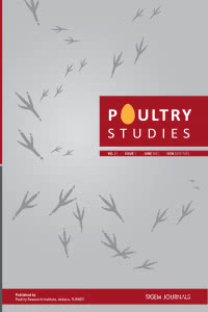Bingöl İli Köy Tavukçuluğunun Yapısı
Bu araştırma, Bingöl ili köy tavukçuluğunun yapısını incelemek, sorunlarını ve çözüm yollarını ortaya koymak için yürütülmüştür. Çalışmanın materyalini, Bingöl iline bağlı köylerde üreticilerle yüz yüze yapılan anketler aracılığı elde edilen veriler oluşturmuştur. Anket yapılacak olan köyler, örnek populasyonunu temsil edecek şekilde, basit tesadüfî örnekleme yöntemiyle seçilmişlerdir. Üreticilere uygulanan anketlerde, üreticilerin sosyo-ekonomik durumları, köy tavuğu yetiştirme amaçları, bakım-besleme düzeyi, barınak bilgileri ve üretici sorunlarının saptanması amaçlanmıştır. Elde edilen sonuçlara göre, üreticilerin % 75.7’si erkek, %24.3’ü bayan olup, yaş ortalaması 45.2 olarak belirlenmiştir. Hastalıklar daha çok Eylül-Kasım aylarında görülmekte (%40.4) ve hastalık görülme oranı %53.2 olarak tespit edilmiştir. Kümes hayvanlarının beslenmesinde konsantre yemin hemen hemen hiç kullanılmadığı sonucu bulunmuştur. Beslemede daha fazla artıklar (%91), otlatma (%59) ve dane yem (%28.2) kullanılmaktadır. Sonuç olarak, yetiştiricilere hastalıklarla mücadele konusunda uzman kişi ve kurumlar aracılığıyla gerekli bilgi ve desteğin verilmesi gerekmektedir
Anahtar Kelimeler:
Bingöl, köy tavukçuluğu, üretici, yumurta, tavuk eti
The Structure of Backyard Poultry in Bingol Province
This research was conducted to examine the structure of backyard poultry in Bingöl province, and to demonstrate its problems and the solutions. Study material consisted of the data obtained through face-to-face surveys with producers in the villages of Bingöl province. The villages were selected by by simple random sampling method to represent sample population, it was aimed, in the surveys conducted for manufacturers, to determine socio-economic status of the producers, their objectives for raising village chicken , management level , knowledge about housing system and manufacturer problems . According to the results, 75.7% of producers are male, while 24.3% are female. The average ages of producers are calculated as 45.2. Diseases are seen mostly in September-November (40.4%) and disease incidence was determined to be 53.2%. It was found out that concentrate feed was almost never used in poultry feeding in the villages. It was confirmed that mostly wastes and/or byproduct feeds (91%) pasture (59%) and grains (28.2%) were used in poultry feeding. As a result, it is necessary to give information and to support through experts and institutions about fighting against the disease to the growers.
Keywords:
Bingöl, backyard poultry, producer, egg, chicken meat,
- ISSN: 1302-3209
- Yayın Aralığı: Yılda 2 Sayı
- Başlangıç: 1999
- Yayıncı: Tavukçuluk Araştırma Enstitüsü Müdürlüğü
Sayıdaki Diğer Makaleler
Bingöl İli Köy Tavukçuluğunun Yapısı
Hakan İNCİ, Recep BURAL, Turgay ŞENDÜL
Kanatlı Sektöründe Probiyotiklerin Etkinliği ve Geleceği
İsmail ÜLGER, Selma Büyükkılıç BEYZİ, Mahmut KALİBER, Yusuf KONCA
Abdulkarim Abdulmageed AMAD, Frank LİEBERT
Züleyha KAHRAMAN, Şahnur DEMİRTAŞ, Şermin YURTOĞULLARI, Ebru ONBAŞILAR
Yusuf KONCA, Selma BÜYÜKKILIÇ BEYZİ, Mürsel KARABACAK, Erdal YAYLAK
